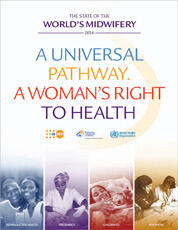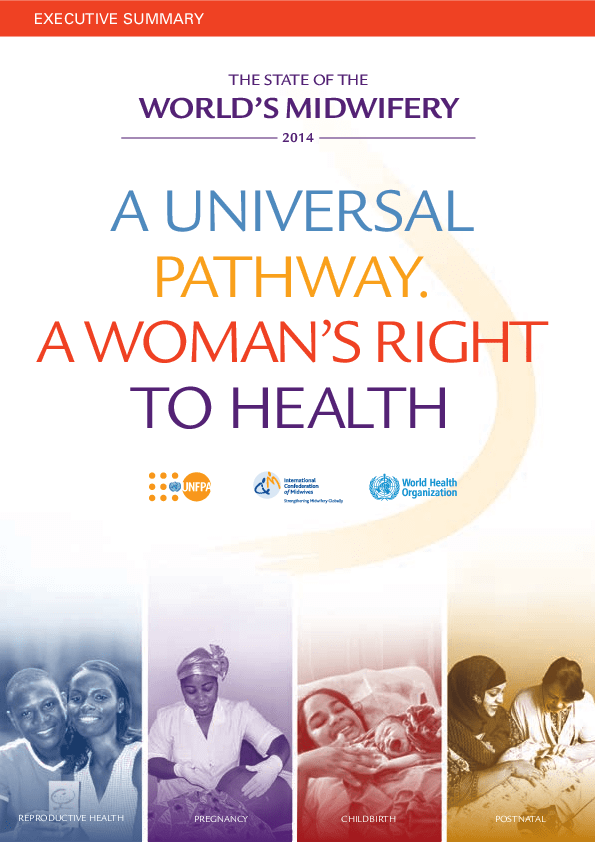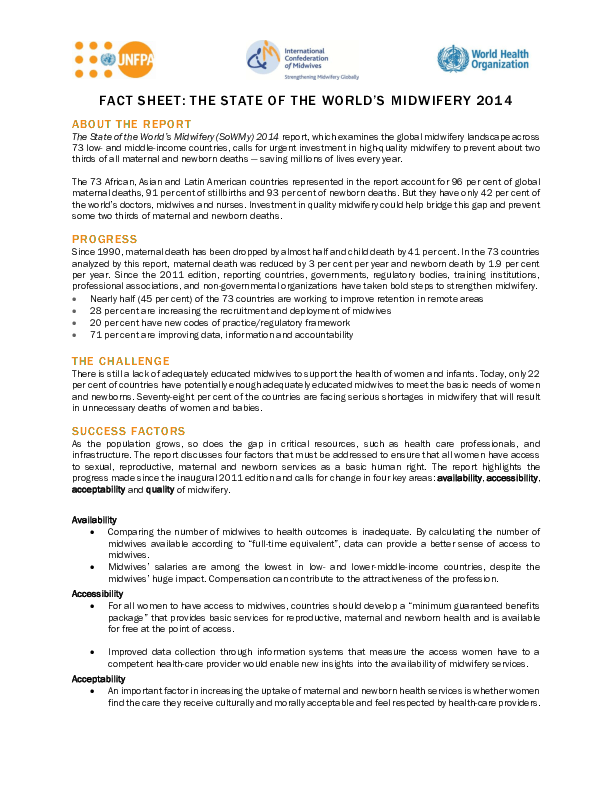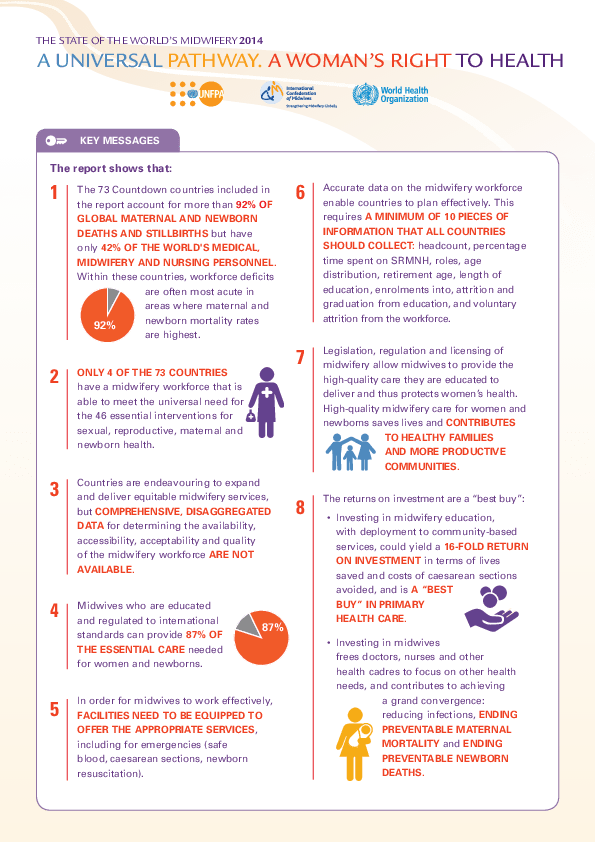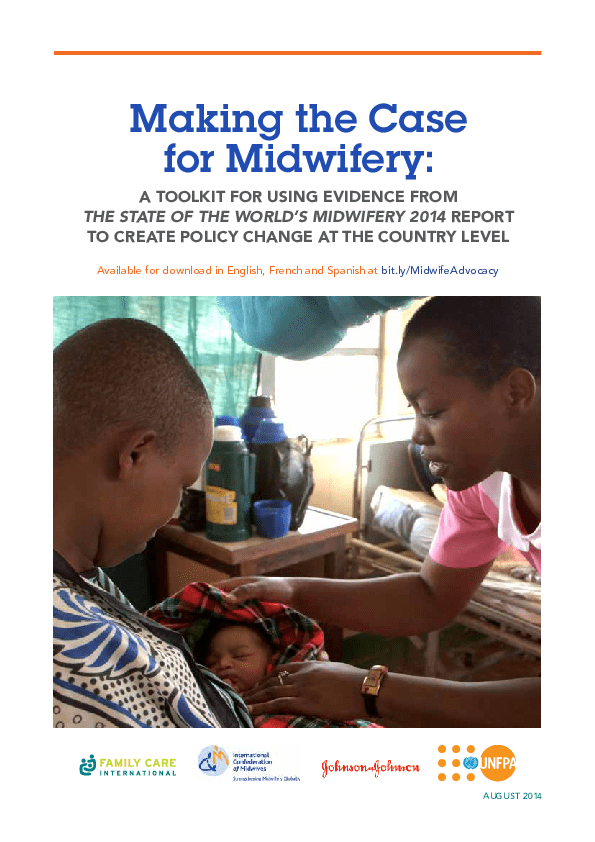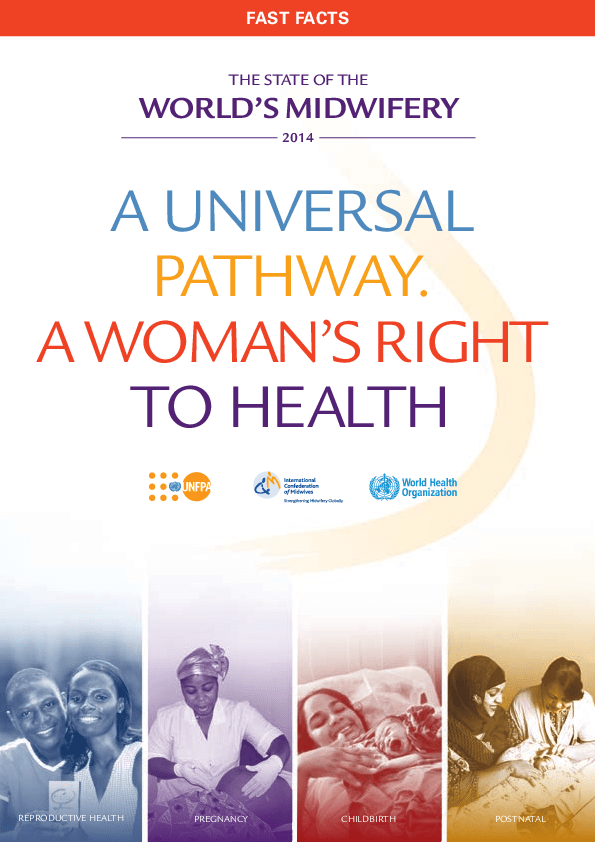A dispute exists between the Governments of Argentina and the United Kingdom of Great Britain and Northern Ireland concerning sovereignty over the Falkland Islands (Malvinas).
The boundaries and names shown and the designations used on this map do not imply official endorsement or acceptance by the United Nations.
State of the World’s Midwifery 2014
A Universal Pathway. A Woman's Right to Health
No. of pages: 228
Publication date: 2014-01-01
Author: UNFPA
Publisher: UNFPA
ISBN: 978-0-89714-026-3
The State of the World’s Midwifery (SoWMy) 2014 presents findings on midwifery from 73 low and middle- income countries. The report, produced by UNFPA, the International Confederation of Midwives (ICM), the World Health Organization (WHO) and several other partners, shows the progress and trends that have taken place since the inaugural 2011 edition, and also identifies the barriers and challenges to future progress. The report focuses on the urgent need to improve the availability, accessibility, acceptability and quality of midwifery services. Despite a steady drop in maternal and newborn deaths since 1990, hundreds of thousands of women and newborns continue to die each year during pregnancy and childbirth: An estimated 289,000 women and about 3 million newborn babies died in 2013 alone. The vast majority lost their lives due to complications and illnesses that could have been prevented with proper antenatal care and the presence of a skilled midwife during delivery.
Related resources
Infographic

Partners
Partners
The report is coordinated by:
UNFPA and WHO on behalf of the H4+ (UNAIDS, UNFPA, UNICEF, UN Women, WHO, and the World Bank) with the International Confederation of Midwives (ICM) and supports the UN Secretary-General’s Every Woman, Every Child campaign.
Supporting partners:
- Australian Aid
- Averting Maternal Death and Disability Programme (AMDD)
- Bill & Melinda Gates Foundation
- Department of International Development (DFID, United Kingdom)
- Family Care International
- Federal Ministry for Economic Cooperation and Development (Germany)
- Foreign Affairs, Trade and Development Canada
- Girls’ Globe
- Instituto de Cooperación Social Integrare
- International Council of Nurses (ICN)
- International Federation of Gynecology and Obstetrics (FIGO)
- Jhpiego
- Johnson & Johnson
- Luxembourg Agency for Development Cooperation (LuxDev)
- Mamaye! Evidence for Action
- Ministère des Affaires Etrangères et du Développement International
- Norwegian Agency for Development Cooperation (Norad)
- Partnership for Maternal, Newborn & Child Health
- Save the Children
- Swedish International Development Cooperation Agency (Sida)
- University of Southampton
- University of Technology, Sydney
- USAID’s Maternal and Child Health Integrated Programme (MCHIP)
- White Ribbon Alliance

